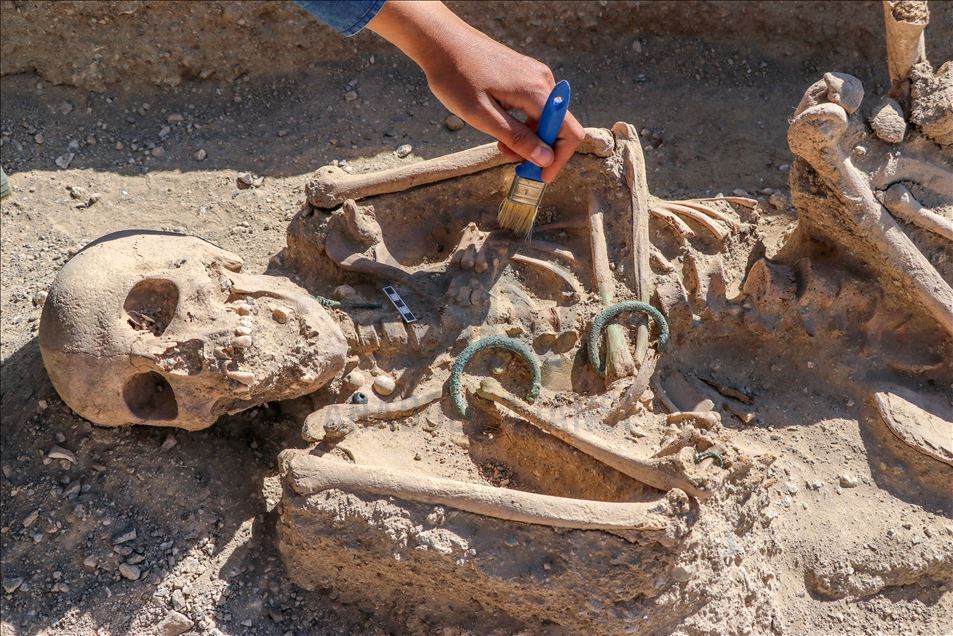In a captivating archaeological revelation, an ancient burial site featuring the remains of a distinguished Urartian woman adorned with a lavish assortment of jewelry has been unearthed within the precincts of Çavuştepe Castle, nestled in the Gürpınar district of Van, a province in eastern Turkey. This groundbreaking discovery sheds light on the opulent burial customs and practices of the Urartian civilization.
Renowned archaeologist Professor Rafet Çavuşoğlu, who heads the archaeology department at Yüzüncü Yıl University in Van, shared insights about the extensive findings of a three-year excavation endeavor in the necropolis zone. This remarkable site has brought forth a trove of invaluable information that deepens our understanding of the cultural traditions of ancient civilizations.

This revelation resonates with earlier findings this year, reinforcing the paramount significance of jewelry within the burial rites of the Urartians. As Professor Çavuşoğlu articulated, “The most recent burial site we uncovered is believed to belong to a woman aged between 20 and 25. What sets this discovery apart is the remarkable fact that the woman’s interment was accompanied by an array of jewelry. Her skeletal remains are bedecked with a nearly complete set of exquisite jewelry, underscoring the profound esteem in which the Urartian society held the adornment customs of their women.”

The meticulous excavation work at Çavuştepe Castle attests to the intricate societal dynamics of the Urartian civilization, an ancient kingdom that thrived in the mountainous regions of Eastern Anatolia from the 9th to 6th centuries BCE. The find provides a poignant window into the cultural nuances and artistic sensibilities that characterized Urartian society.

The uncovering of this burial site adds yet another layer to the tapestry of archaeological revelations that continue to emerge from the Anatolian region, reaffirming the timeless allure of unraveling the mysteries of our human heritage. As researchers and experts delve deeper into these findings, the legacy of the Urartians finds renewed life, captivating the imagination and enriching our knowledge of ancient civilizations.





